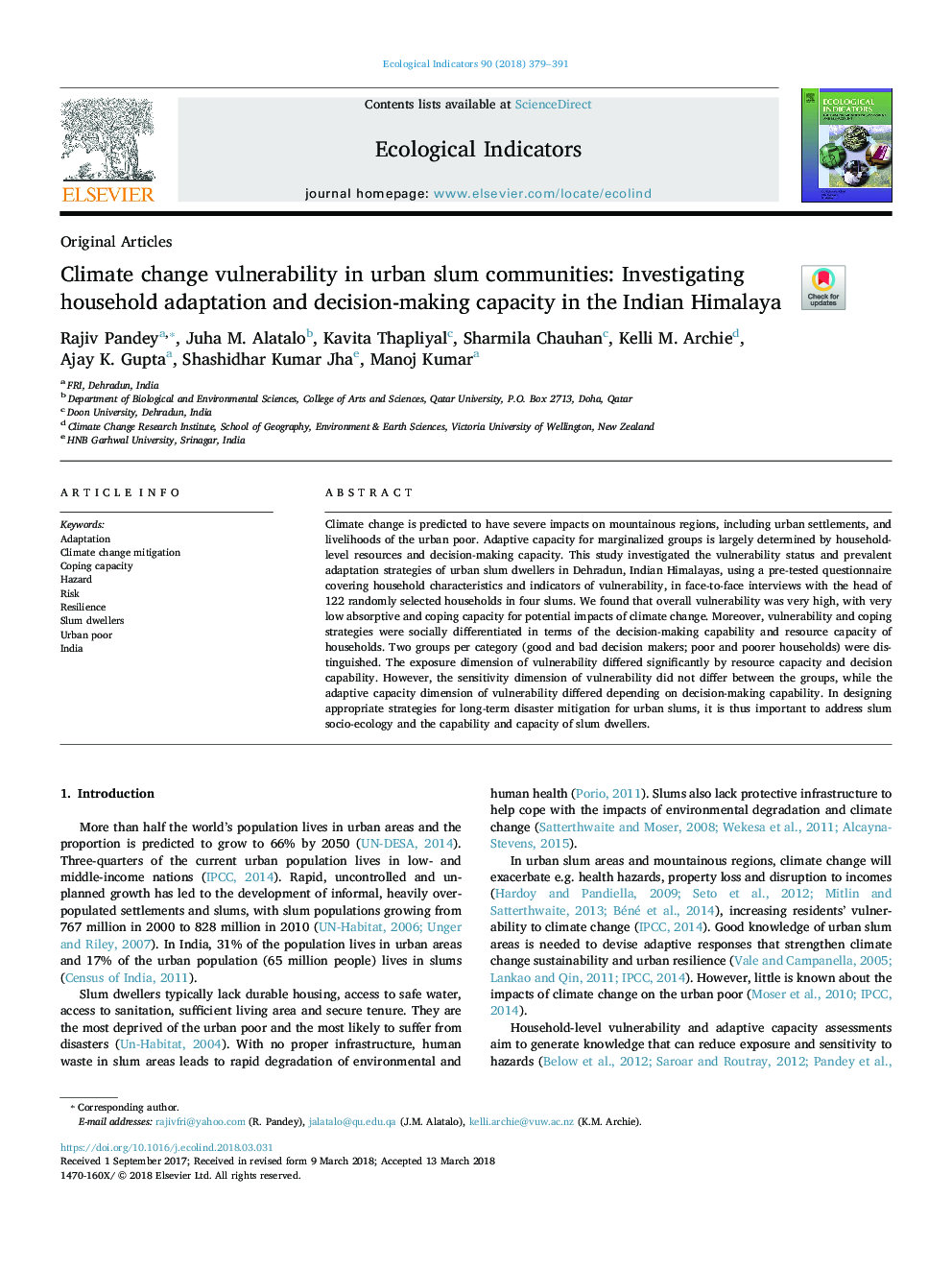| Article ID | Journal | Published Year | Pages | File Type |
|---|---|---|---|---|
| 8845430 | Ecological Indicators | 2018 | 13 Pages |
Abstract
Climate change is predicted to have severe impacts on mountainous regions, including urban settlements, and livelihoods of the urban poor. Adaptive capacity for marginalized groups is largely determined by household-level resources and decision-making capacity. This study investigated the vulnerability status and prevalent adaptation strategies of urban slum dwellers in Dehradun, Indian Himalayas, using a pre-tested questionnaire covering household characteristics and indicators of vulnerability, in face-to-face interviews with the head of 122 randomly selected households in four slums. We found that overall vulnerability was very high, with very low absorptive and coping capacity for potential impacts of climate change. Moreover, vulnerability and coping strategies were socially differentiated in terms of the decision-making capability and resource capacity of households. Two groups per category (good and bad decision makers; poor and poorer households) were distinguished. The exposure dimension of vulnerability differed significantly by resource capacity and decision capability. However, the sensitivity dimension of vulnerability did not differ between the groups, while the adaptive capacity dimension of vulnerability differed depending on decision-making capability. In designing appropriate strategies for long-term disaster mitigation for urban slums, it is thus important to address slum socio-ecology and the capability and capacity of slum dwellers.
Related Topics
Life Sciences
Agricultural and Biological Sciences
Ecology, Evolution, Behavior and Systematics
Authors
Rajiv Pandey, Juha M. Alatalo, Kavita Thapliyal, Sharmila Chauhan, Kelli M. Archie, Ajay K. Gupta, Shashidhar Kumar Jha, Manoj Kumar,
